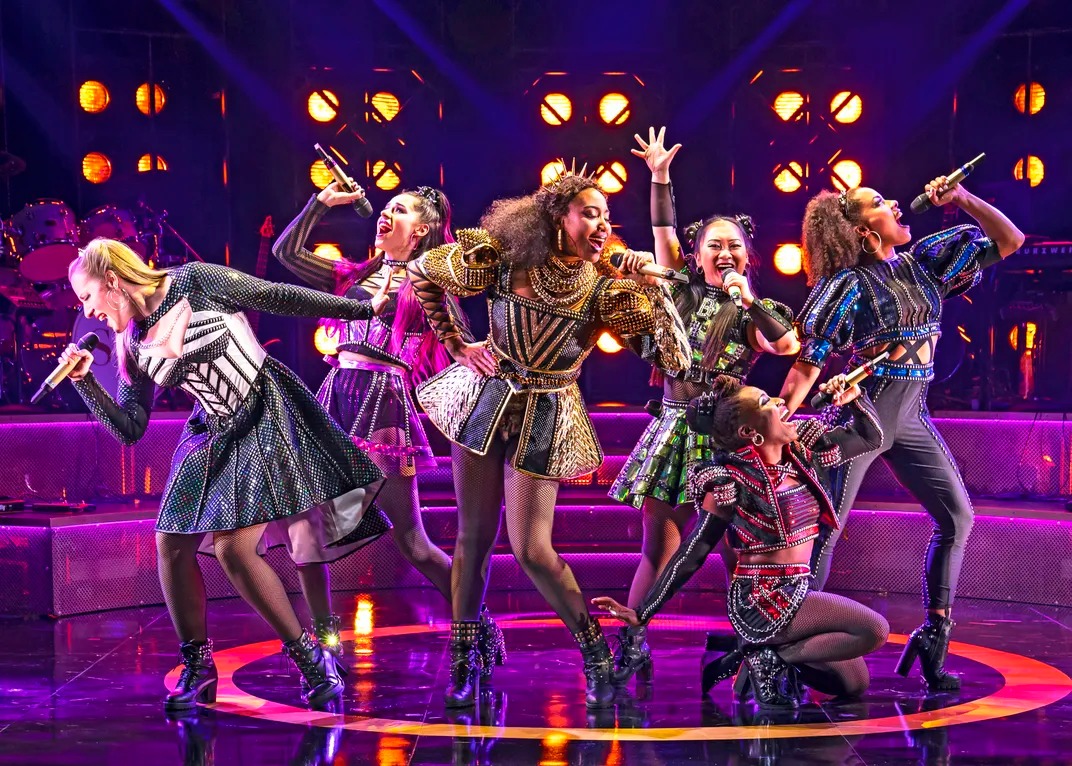I was somewhat familiar with the story of the infamous King Henry VIII prior to hearing about “SIX: The Musical,” whether it was from a passing mention of the Protestant Reformation in history class or the many fictionalized dramas centered on his life. Although Henry VIII is recognized for feats such as becoming the head of the church of England and helping to establish a Royal Navy, he is more widely known for the tragic ends to his six marriages, which follow the popular saying, “Divorced, beheaded, died; divorced, beheaded, survived.”
“SIX,” a Tony award winning musical written by Toby Marlow and Lucy Moss in their senior year at Cambridge University, reimagines and reanimates the six wives as members of a pop girl group. With an all female cast, the playwrights set out to compensate for a lack of gender diversity within musical theater, intending to hone in on feminist and queer themes. To do this, they took plenty of artistic liberties with their retelling of the stories of Catherine of Aragon, Anne Boleyn, Jane Seymour, Anna of Cleves, Katherine Howard and Catherine Parr, while still maintaining a semblance of historical basis.
During the “SIX” performance at the Connor Palace on Friday, Sept. 8, there was rarely a lull in the energy of the performance. From start to finish, it remained incredibly animated, with the queens at odds and trying to figure out whom amongst the six of them deserves the role of lead singer for their band. They quickly agree that the wife with the most strife in their life while with Henry deserves the title and, thus, compete against each other by comparing their stories through song. Although they all share the cursed title of Henry VIII’s former wife, it is impressive to see how each character never fails to grab the spotlight as they are given a sense of personhood beyond their historical notoriety. Each song serves to further individualize the wife it focuses on and her story. They are all given charismatic personas based on current leading ladies of the music industry such as Beyoncé, Avril Lavigne, Adele, Rihanna, Ariana Grande, Britney Spears and Alicia Keys. To further enhance the setting as a concert experience, the live back-up band, the Ladies in Waiting are featured on stage with the main cast. They take on the personas of a fictionalized version of historical ladies-in-waiting for these former queens.
The first person to take the stage to compete is Catherine of Aragon (Gerianne Pérez). Her song “No Way” is an anthem of defiance as she recounts her refusal to take Henry’s demands for divorce without a fight. Reminiscent of Beyoncé’s sound from her album “4,” she balances her pride with persistence.
The serious and insistent feel of the previous song immediately falters as the next queen is introduced. Played by Zan Berube, this take on Anne Boleyn is a playful party girl who doesn’t take her situation seriously until it’s too late. Her upbeat song, “Don’t Lose Ur Head,” distracts from the underlying misfortune of her circumstances as she plays around with words and innuendo. Avril Lavigne is cited as one of Anne’s inspirations.
The show slows as Jane Seymour (Amina Faye) takes center stage to perform her ballad, “Heart of Stone.” She immediately mesmerizes audiences with her vocal prowess. Inspired by Adele, Jane displays quiet strength and careful determination through her use of lyricism.
The competition briefly pauses for the comedic, glow in the dark performance “Haus of Holbein.” It’s a satire that pokes fun at the beauty standards of the Tudor period with lyrics such as “So what? The makeup contains lead poison. At least your complexion will bring all the boys in” and “For blonder hairs, and you just add a magical ingredient from your bladder.”
While the audience is still bustling with energy from the previous song, Anna of Cleves (Terica Marie) builds it up even more with “Get Down,” as she refuses to be defined by rejection and spins it into something empowering. Inspired by Rihanna and Nicki Minaj, Anna celebrates her life and dodges the bullet of marrying Henry VIII.
Katherine Howard (Aline Mayagoitia) takes the stage with a classic pop song, “All You Wanna Do,” mimicking Spears. She recounts the series of events that occurred in her life leading up to her execution. The song takes a dark turn by the end as Katherine becomes visibly jaded by these experiences, truly hitting every emotional beat.
The musical takes a turn as Catherine Parr (Sydney Parra) ceases the competition by claiming independence in the song “I Don’t Need Your Love,” echoing Keys. This song provokes reflection in the others as they reconsider the banality of the competition and agree to stand in solidarity.
Yet behind all the glitz, glamor and theatrical visuals of the show, there is something to be said about the exploration of its main themes. The underlying idea throughout “SIX” is the reclamation of the wives’ own individual narratives—separate from those written, altered and retold by men. Yet most of the show is spent with the characters engaging in competition, comparisons and catfights regarding who experienced the worst relationship with Henry. Despite the wives eventually giving up the competition and agreeing to stand together in solidarity, the message remained surface level at best. It was hammered in so often that it became something of a caricature of a feminist message, even using recycled buzzwords.
Nevertheless, despite some themes falling a bit flat, “SIX” did serve its purpose as a vibrant spectacle suitable for a night of entertainment with friends and family. While it doesn’t dive much deeper into the reclamation and separation of these narratives from what history already accounts for, it is a message that sparks further conversation for those interested.


